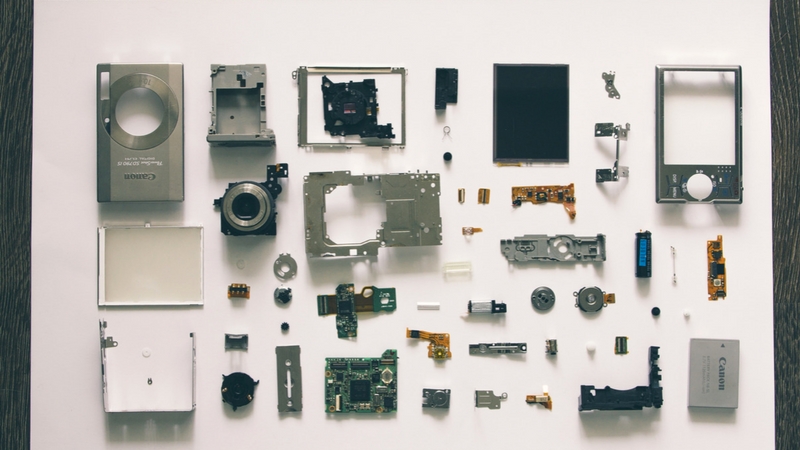Spare Parts and Idea Journals
Episode #5 of the course Where good ideas come from by Jeff Brunski
If you walk into the shop of any creative inventor, you’ll see many spare parts lying around. All good tinkerers know that any part can be the right part, depending on the project. In this lesson, we’ll discuss how to keep “spare parts” of ideas around, which can help lead to having the right idea at the right time.
What Are Spare Parts?
There are spare parts in any garage. They sit on shelves, in drawers, in big heaps, and in small jars. These are the “literal” parts that can be repurposed to solve new problems.
Figuratively, there are spare parts of ideas in your head. These things sit in your recollection or memory. They are the design of a website, the maxim about management, the best practice for solving a type of problem, etc. They are internalized in your system—encoded in your mind.
Both literal and figurative spare parts work to form new ideas in the same way. They can be repurposed from their original function and adapted into a new service—a new life. They can be combined with one another to form new objects, solutions, or ideas.
“Good ideas want to connect, fuse, recombine.” —Steven Johnson
Why Spare Parts Work
Most ideas are just combinations of other ideas. Or new ideas are when one idea is applied to another purpose. It stands to reason that the more “raw ingredients” you have in your mind (i.e. existing ideas), the more opportunity there is for connection. In short, having many ideas helps you have new ideas.
Where to Collect Spare Parts
Try online! Some people call it aimlessly surfing the web, but you could really call it collecting spare parts.
Many of the other things mentioned in this course—observation, nurturing hunches, learning from failure—are also methods for collecting spare parts. When you think of everything around you as a possible spare part of a bigger, future idea, you might start paying attention a little more. They call this being mindful.
How to Store Spare Parts
Rather than just hoping problems and solutions find one another in your head, another mechanism for bringing them together is with a research or idea journal.
An idea journal is exactly what it sounds like. Use it to save interesting thoughts, hunches, other ideas and inspirations, or anything else you find interesting. This journal can take any form, but I recommend using something digital, like Evernote.
Why digital? Because running a search query on a digital idea journal can produce interesting results. It often puts related concepts next to one another in new and original ways. Every time you search your journal for keywords, you’ll see new connections between the notes you’ve taken, in much the same manner as what happens when you let your mind wander. A digital idea journal can replicate the serendipitous connections between spare parts that can happen inside your head.
Summary
Great innovators always keep spare parts lying around because they’re useful for creating something new. Ideas are no different. Expose yourself to many ideas, and keep track of them in journals if you want to increase your chances of having great new ideas.
While idea journals are a great way to keep thoughts collected and organized, it’s inevitable that you’ll make mistakes. Next lesson will touch on how error can be a great source of new ideas.
Recommended reading
Four Reasons to Keep an Idea Journal
Recommended book
Wreck This Journal by Keri Smith
Share with friends

